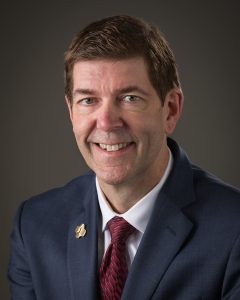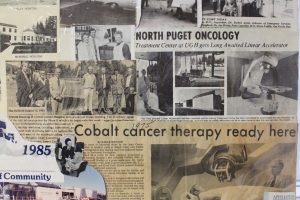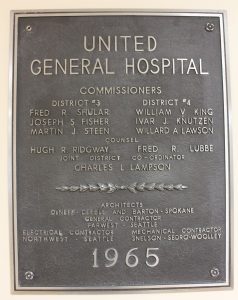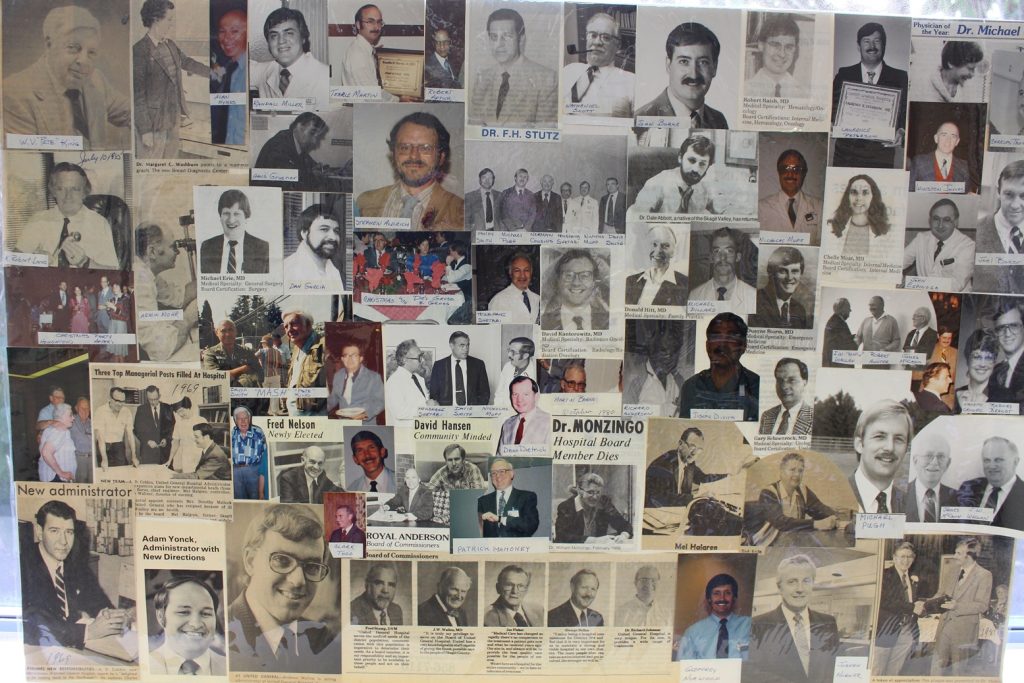For more than a half century, PeaceHealth United General Medical Center has cared for Skagit County residents and maintained an important healthcare role in the community.

The hospital and its services have changed over the years, but its commitment to top-notch care have never waned, says Chris Johnston, the hospital’s chief administrative officer.
United General’s journey to where it is today began in 1965, with the merging of Sedro-Woolley’s Memorial Hospital and Burlington’s Matthews Hospital (previously known as Burlington General Hospital). The union was reflected in the new hospital’s name.
When United General Hospital opened, it was a 97-bed, full-service hospital with multiple medical specialties available, something Johnston says was common for even smaller hospitals of that era.
By the early 1970s, United General had developed an oncology department with both medical and radiation oncology and obtained a linear accelerator (used for radiation treatments) that was among the first north of Seattle. By the late 1980s, however, constriction in the healthcare market led to consolidation of services and several hospital mergers. Locally, this included the merger of St. Luke’s and St. Joseph hospitals in Whatcom County.
In Skagit County, a merger between United General and Mount Vernon’s Skagit Hospital (now Skagit Regional Health) took place in the early 1990s, creating Affiliated Health Services. This collaboration lasted a little more than a decade, but as with some hospital mergers of the time, Johnston says the hospitals didn’t necessarily distribute their services and staff evenly.

While more services could be found at Skagit than United General, public support was voiced to keep United General operating. We listened. Our community, says Johnston, wanted more than just an urgent care clinic.
United General and Skagit Regional disaffiliated in 2003, triggering a reset for the hospital and its services. United General subsequently became a Critical Assess Hospital, resulting in greater reimbursement rates more supportive of the area’s rural communities. The change also reduced capacity to 25 beds. And while the hospital still had emergency, oncology and surgical services, it lacked medical specialties like gastroenterology.
“We had to start rebuilding a new United General at that point,” Johnston says. “We embarked on a journey to see what we could do to help support the community. We really felt like we were here because the community called us to be here.”
Around 2012, as United General continued to rebuild its trust and services within the community, the hospital began partnership discussions with PeaceHealth. Providers for specialties like cardiology, pulmonology, and gastroenterology began visiting the hospital from Bellingham once or twice a week.

In 2014, hospital commissioners determined the best path for the hospital’s long-term sustainability was aligning with PeaceHealth. That year, the two entities came together under a management operation contract, officially making the hospital a PeaceHealth managed medical facility. Public Hospital District 304 continues to own the hospital’s land and buildings.
Today, PeaceHealth United General Medical Center and adjacent PeaceHealth Medical Group clinics are thriving. With just four primary care providers in 2014, PeaceHealth now has 14. The hospital also has an acute rehabilitation center with 10 additional patient beds, a nearby walk-in clinic, and specialty care including orthopedics, gastroenterology, urology, cardiology, pulmonology, OB-GYN and neurology.
The hospital has made large-scale investments in both its facilities and technologies, including 3-D mammography, computed tomography (CT or CAT scan) and surgical services. In addition, PeaceHealth has helped United General expand community outreach, opening a school-based health clinic inside of Sedro-Woolley High School. They’ve also worked hand-in-hand with Public Hospital District 304 on several wellness programs, including Help Me Grow Skagit and the Skagit Fruit and Vegetable Prescription Program.

“We’ve really been able to utilize our integration into PeaceHealth to reach out into the community and move more upstream in providing wellness and preventative medicine, as opposed to just emergency need,” Johnston says.
As a whole, Johnston says PeaceHealth United General’s focus is to provide about 80 percent of possible patient services to minimize out-of-county care, all the while still deferring to larger facilities in Bellingham and Seattle when necessary.
As the hospital enters its next 50 years of operation, you can be sure that PeaceHealth United General will only continue to improve its reputation in offering the care you need, close to home.

Sponsored



































